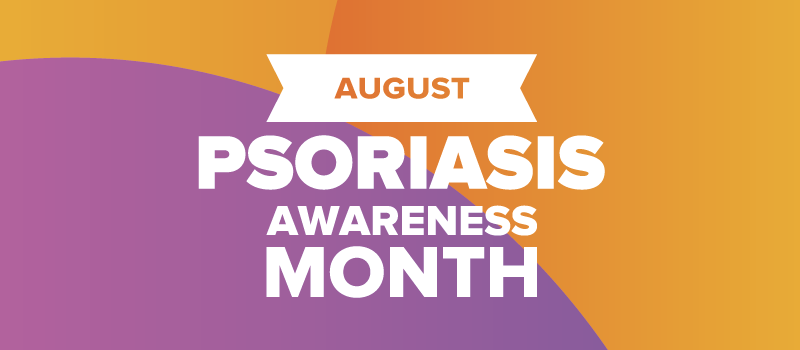What’s the Buzz
The Bee Healthy Blog
The Most Effective Medications to Treat Folliculitis

Folliculitis is a common skin condition affecting hair follicles. While it is generally benign, knowing what to look for in a folliculitis diagnosis can effectively relieve itching and soreness, along with other folliculitis symptoms, which can negatively affect a person’s confidence and self-esteem. Please continue reading to learn about some of the most effective treatments for folliculitis.
What is folliculitis?
Folliculitis is a common skin condition in which the hair follicles become inflamed and infected. Hair follicles are tiny pores or pockets in the skin where hair starts growing at the bottom of the follicles. Hair follicles often become inflamed as the result of bacteria or fungi, leading to itchy, painful, pus-filled pimples. For most people, folliculitis is not harmful and typically resolves by practicing good hygiene and wearing appropriate clothing. However, people can suffer from severe cases of folliculitis, which are painful and reduce their quality of life. If you have certain health conditions or are taking medications that weaken the immune system, treatment is almost always warranted, as your body cannot clear infections well enough compared to others.
What are the different types of folliculitis that affect hair follicles?
Folliculitis can be superficial or deep. Superficial folliculitis only involves parts of the hair follicle. Deep folliculitis affects the entire hair follicle and is more serious.
Most cases of folliculitis are bacterial infections, but fungi and viruses can also cause this condition. The treatment depends on the type of folliculitis. Here is some useful information about the different types of folliculitis.
Bacterial folliculitis
This is the most common type of folliculitis. Signs and symptoms include an itchy rash and pus-filled bumps. Bacterial folliculitis usually occurs due to an infection caused by a type of staph bacteria called Staphylococcus aureus. These bacteria are considered the normal “residents” of the skin flora, and they are typically harmless until they find their way into the body through cuts or open wounds.
Hot tub folliculitis
This is also called pseudomonas folliculitis or hot tub rash. Hot tub folliculitis occurs due to infection with Pseudomonas aeruginosa bacteria that are found in hot tubs, water slides, and swimming pools where the levels of chlorine or pH aren't within the appropriate range. It causes round, itchy bumps 1 to 2 days after exposure to the bacteria.
Pseudofolliculitis barbae
This rash, also called razor bumps, sycosis barbae, or barber’s itch looks very similar to facial folliculitis. However, it is caused by ingrown hairs and is not a bacterial infection of the hair follicles. Pseudofolliculitis barbae typically occurs on the face and neck in people who shave too closely, for example, with an electric razor. This condition is also more common depending on race, such as with Black males. It can also develop in the groin area after a bikini wax.
Gram-negative folliculitis
This folliculitis sometimes develops in people on long-term antibiotics for acne or other facial bacterial infections. It consists of pus-filled pimples in the nose and mouth area that can be defined as closed (whiteheads) or open (blackheads).
Pityrosporum folliculitis
This type of folliculitis is a fungal infection or yeast infection. Signs and symptoms include an itchy rash and pus-filled bumps. The infected skin is typically on the back and chest.
Furuncles and carbuncles
This is a type of deep folliculitis due to staph bacteria. It consists of a furuncle (painful and inflamed boil) that appears suddenly. A cluster of boils (called a carbuncle) can also develop in some people.
Eosinophilic pustular folliculitis
Eosinophilic folliculitis skin diseases are not completely understood. People with HIV/AIDS tend to develop folliculitis of this type. Symptoms include intense itching and recurrent inflammation of the hair follicles of the face and upper body, resulting in pimples.
Viral folliculitis
This occurs due to an infection with the herpes simplex virus. It is relatively rare.
Demodex folliculitis
This folliculitis is caused by a mite. It causes itching, burning, redness, and tiny pimples.
Folliculitis keloidalis nuchae
Also called acne keloidalis, this is a chronic (long-term) inflammatory condition that can lead to scarring of the hair follicles and permanent hair loss.
What is the best medication for folliculitis?
It’s important to see a healthcare provider for proper folliculitis diagnosis and effective treatment. Keep in mind that some acne-like breakouts could be folliculitis. A dermatologist or other healthcare professional who usually diagnoses soft tissue infections can diagnose folliculitis versus an acne breakout. They can then treat the acne or folliculitis appropriately. If there is any confusion in the diagnosis, your healthcare provider may order an extensive workup that, in some skin conditions, includes a skin biopsy.
Here are some of the medications used to treat folliculitis:
Bacterial folliculitis treatment
Simple cases of Staphylococcus aureus bacterial folliculitis may resolve on their own with self-care measures like good skin hygiene, warm compress, moisturizing lotion, and over-the-counter medication to relieve pain. Severe cases may require topical antibiotic treatment, for example, with mupirocin or clindamycin. Deep folliculitis (furuncles or carbuncles) may require treatment with oral antibiotics like dicloxacillin or cephalexin.
Pseudomonas folliculitis treatment
Mild cases of hot tub folliculitis generally resolve on their own within 7-10 days. If the folliculitis is due to prolonged antibiotic use, an oral antibiotic that is effective against the bacteria Pseudomonas aeruginosa may be prescribed, which may include ciprofloxacin.
Pityrosporum folliculitis treatment
The treatment is similar to other fungal infections and consists of oral antifungal agents. Topical antifungals are also used to eliminate the fungus present deep inside the hair follicle. Treatment options for pityrosporum folliculitis include itraconazole and fluconazole.
Viral folliculitis treatment
Viral folliculitis such as herpes is treated like any other viral infection with oral antiviral medications like acyclovir, valacyclovir, and famciclovir.
Eosinophilic folliculitis treatment
This folliculitis is common among people with HIV/AIDS. Treatment usually consists of antiretroviral therapy for the underlying HIV infection. This usually leads to an improvement in folliculitis.
Demodex folliculitis treatment
The treatment for this folliculitis is antiparasitic agents like permethrin cream and/or oral ivermectin or oral metronidazole.
Frequently Asked Questions
Is folliculitis caused by poor hygiene?
Poor hygiene can be a risk factor for developing folliculitis. Other risk factors include:
- Wearing tight clothing that traps sweat, such as high boots or rubber gloves.
- Soaking in hot tubs or using public pools that are not well maintained.
- Shaving, waxing, or wearing tight wigs.
- Skin injuries that allow bacteria to enter the hair follicles.
- A medical history of conditions like hyperhidrosis (excessive sweating), dermatitis (skin inflammation), diabetes, HIV/AIDS, or other conditions that affect the immune system.
- Using certain medications like steroid creams, long-term antibiotics for acne, and some chemotherapy drugs.
Should you pop folliculitis bumps?
You should not pop, poke, cut or squeeze folliculitis bumps. This can aggravate the condition and cause scarring while not solving the underlying condition, causing the bumps to reappear.
Does folliculitis go away?
Mild cases of folliculitis are usually self-limited and go away after 1-2 weeks of self-care measures like good skin hygiene. However, in more serious cases, you may need a prescription medication for disease control of folliculitis. If the bumps are painful, more inflamed, increasing in number, or worrying, it is always a good idea to get an opinion from a medical professional.
How long does it take folliculitis to go away?
Mild folliculitis (superficial folliculitis) usually improves in 7-10 days.
Does laser hair removal help with folliculitis?
Laser hair removal can help prevent folliculitis because it destroys the hair follicle.
References:












SOCIAL